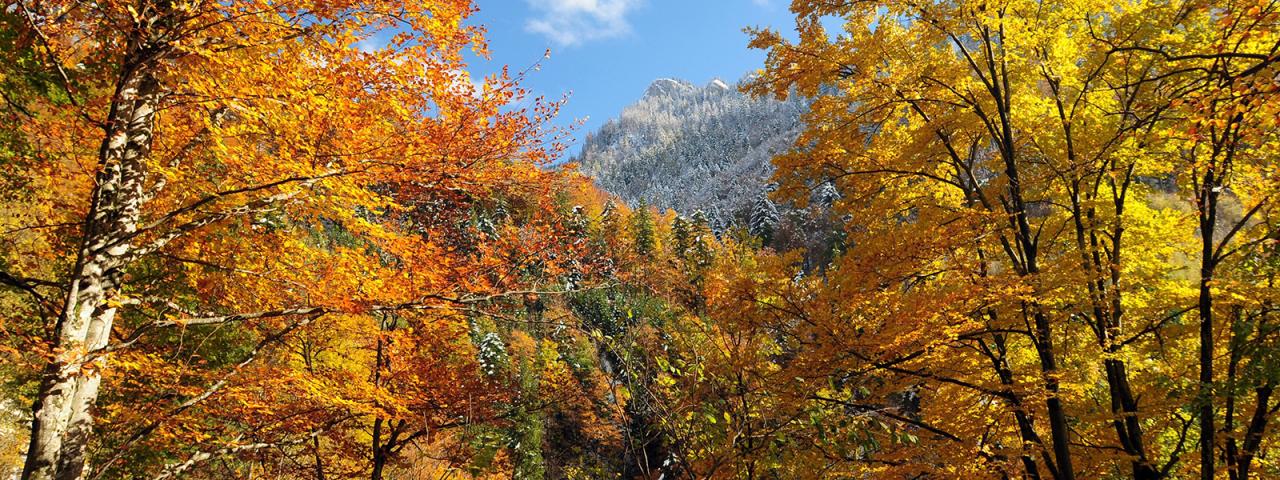The heart of the protected area
Old beech forests
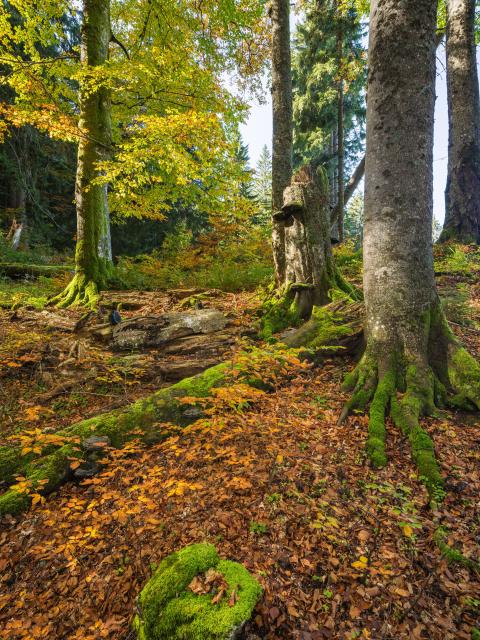
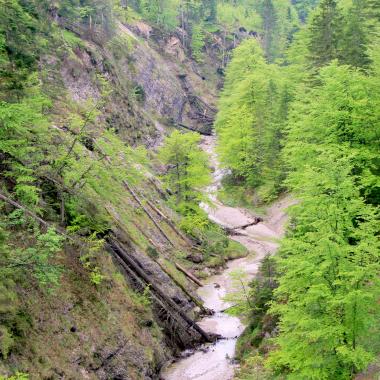
Beech forests dominate Austria's
forest national park
Around half of the forest in Kalkalpen National Park is made up of deciduous forests (around 8,500 ha). In addition to small-scale alluvial forests, swamp forests and ravine forests, these are mainly made up of beech forests. In terms of area, the beech forests are mainly found in the densely wooded Hintergebirge. The lowest altitudes are in the Weißenbachtal/Wilder Graben area near Reichraming, where the so-called optimum of the beech forest is located. Despite intensive use, the beech trees have remained very vital here, especially on the deciduous forest flanks of the valley. The picture is different in the Sengsengebirge: on the south side, there are mainly thermophilic beech forests, which transition to snow heath-pine forests on steep, dry southern slopes, while on the steep northern side they form the forest boundary in places.
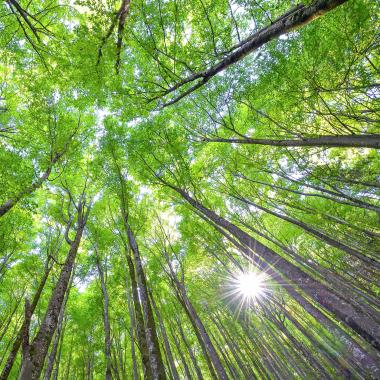
Beech forests
genuine natural beauty
A large part of the attractiveness of beech forests stems from the changes in light and flowering aspects over the course of the year. Probably the most striking feature is the leaf fall, which characterizes the seasonal differences and conditions within the sites. Above all, the incidence of light is significantly influenced by leaf fall. In spring, for example, the beech forest shines with a sea of flowers from the spring geophytes even before the leaves emerge, which use the short leaf-free and light-intensive period after winter to fruit and then retreat back into the ground. Shortly after the leaves emerge, the spring bloomers are followed by the delicate green of the beech leaves, which is sure to impress everyone, no matter how often this natural spectacle is repeated. The striking seasonality that all beech forests and deciduous forests have in common also distinguishes them fundamentally from evergreen coniferous forests.
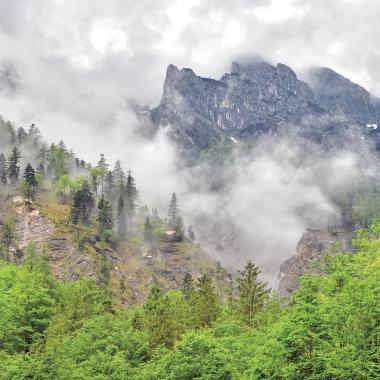
Not all beech forests are the same
Depending on the location, altitude, stand age and/or sociological formation, beech forests differ in terms of the plant species and structural characteristics that occur. At the lowest altitudes of the beech distribution, especially on fresh, well-aerated soils, single-layered, hall-like pure beech stands are characteristic. A weak gradation in the stand can be seen at higher altitudes on medium-growing soils. On warm, dry sites, however, beech loses its competitive strength. Light tree species such as Scots pine and numerous shrub species are added, forming multi-layered stands (Mayer 1974). The diversity of the herb layer also varies depending on the canopy closure.
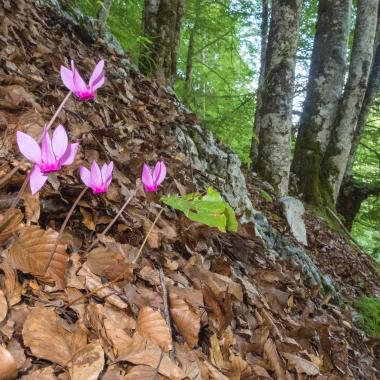
Six different
beech forest communities
Heat-loving beech forests (Cephalanthero Fagenion)
- Cyclamen beech forest
- Snow rose beech forest
Central European beech forests of medium habitats (EU-Fagenion)
- Woodruff-beech forest
Alpine-Dinaric carbonate beech and spruce-fir-beech forests (Lonicero alpigenae-Fagenion)
- Northeastern alpine carbonate-alpine-spruce-fir-beech forest
- Northeastern alpine loam-spruce-fir-beech forest
- High montane carbonate beech forest
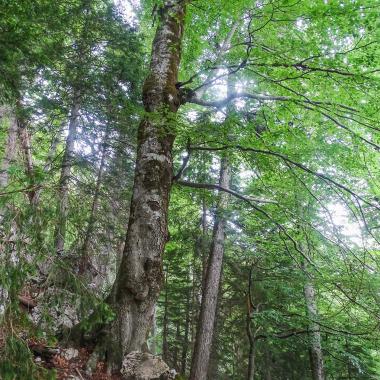
Taller - fatter - older
European beech records
The beech superlatives par excellence can be found in the largest preserved European beech primeval forests in the Carpathians. In the deep primeval forest beech trees reach heights of up to 53 meters and a diameter at breast height of around 1.4 meters. However, the Kalkalpen National Park, which naturally cannot compete with these records due to the area's vigorous growth, also has remarkable features:
- Highest beech tree: 41.5 meters
- Thickest beech: 2.14 meters diameter at breast height (multi-stem)
- Oldest beech tree: 550 years old (in 2024)
- Highest beech forest: 1,450 meters above sea level, Schwarzkogel
